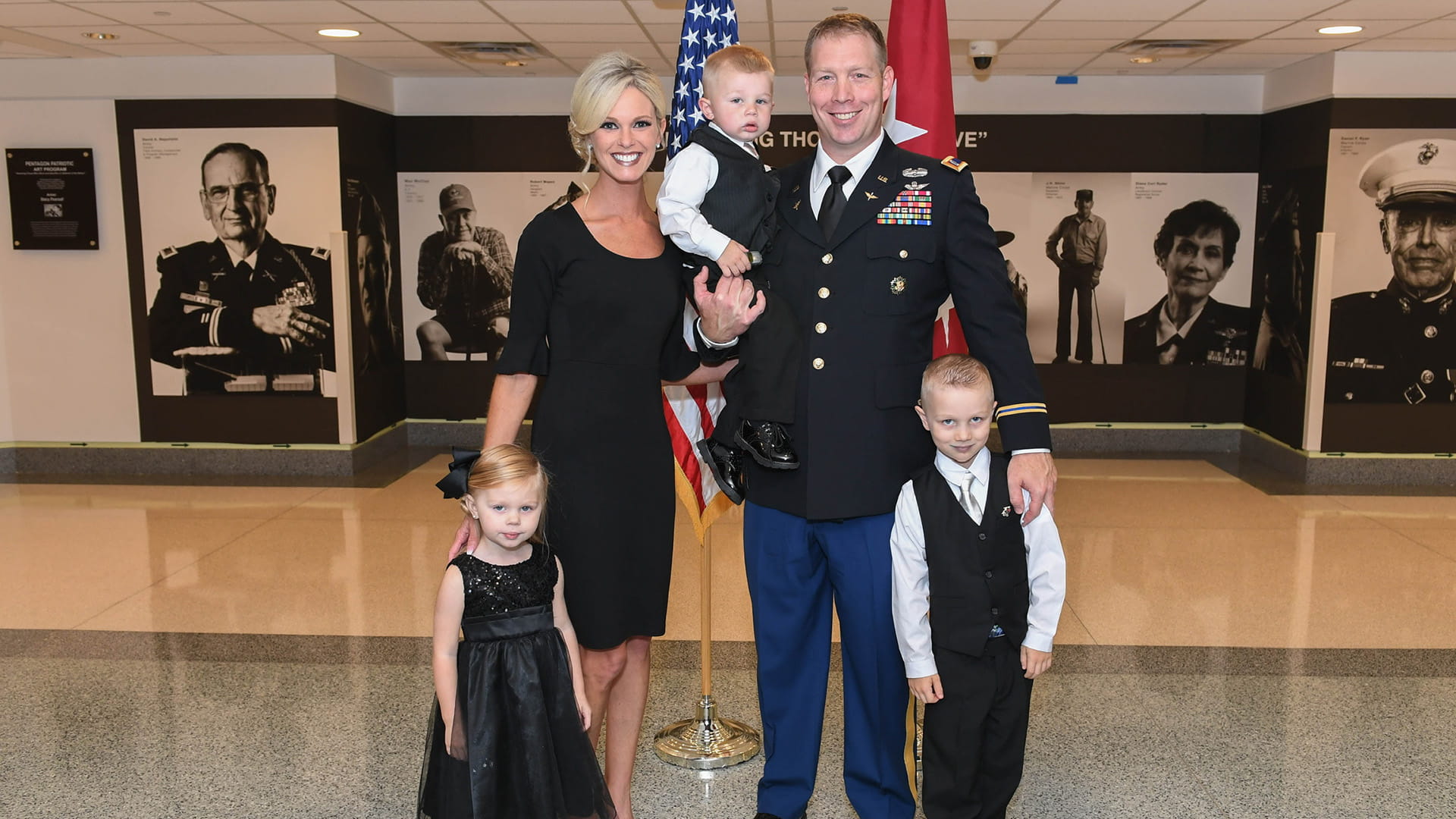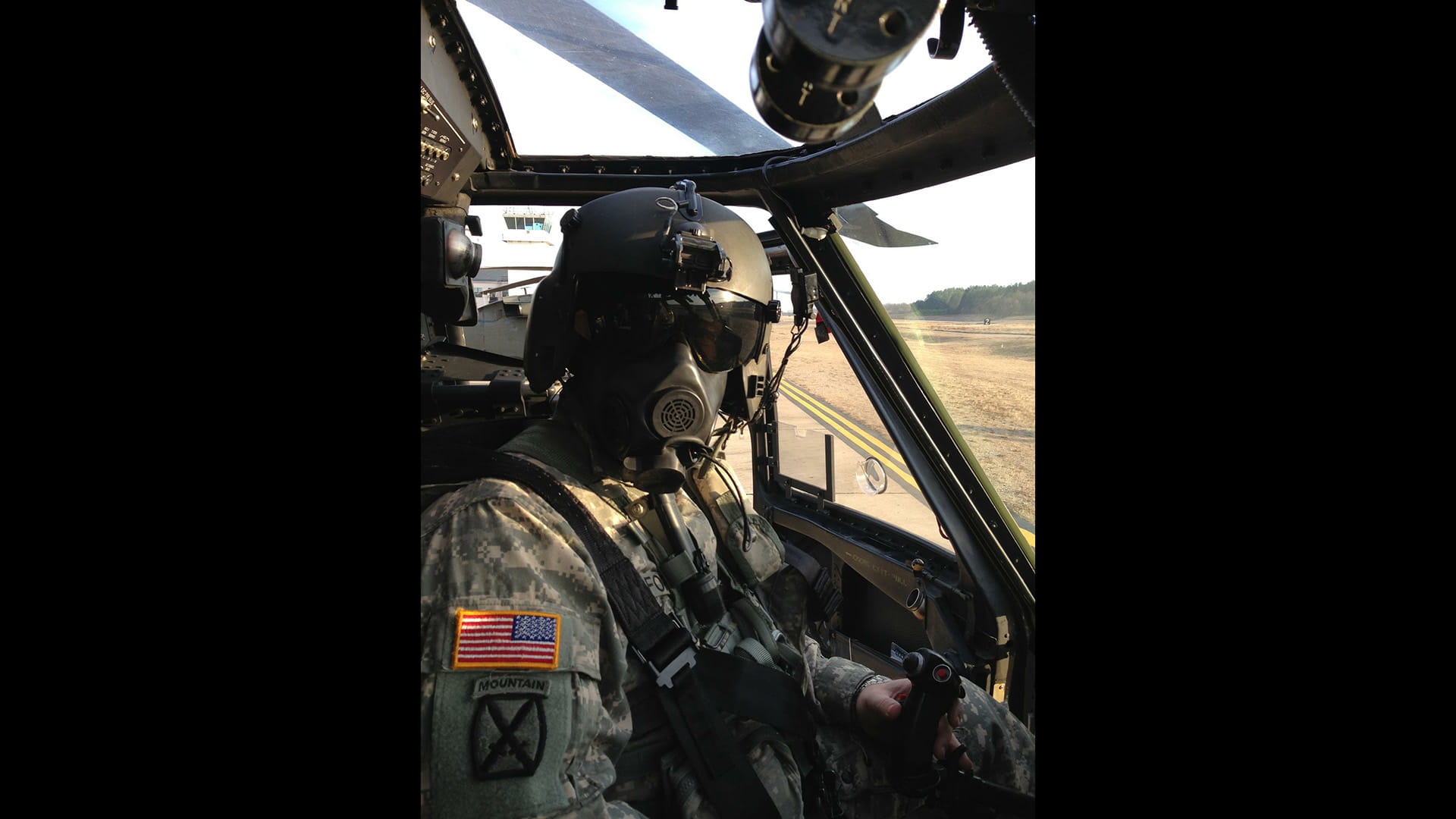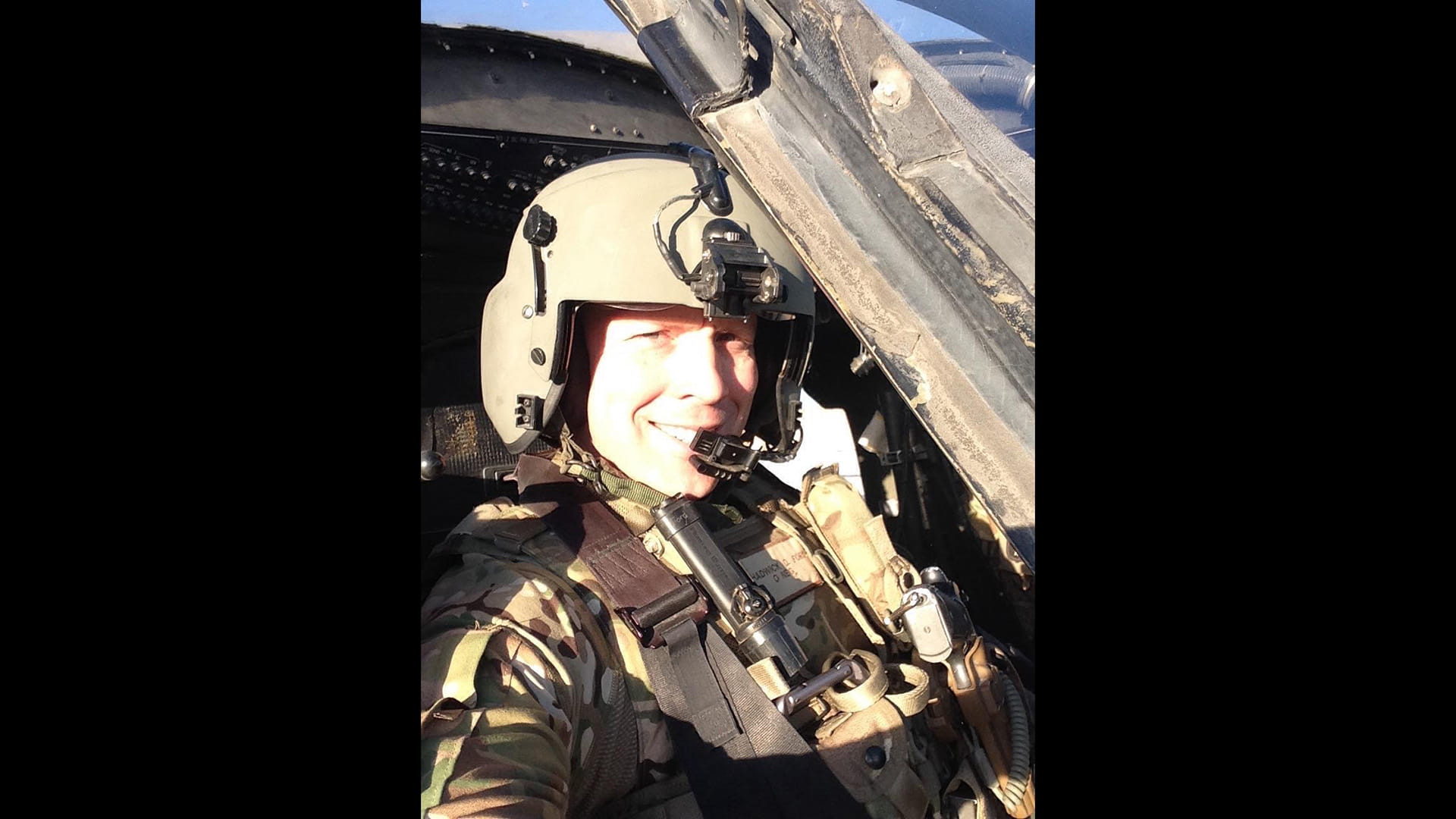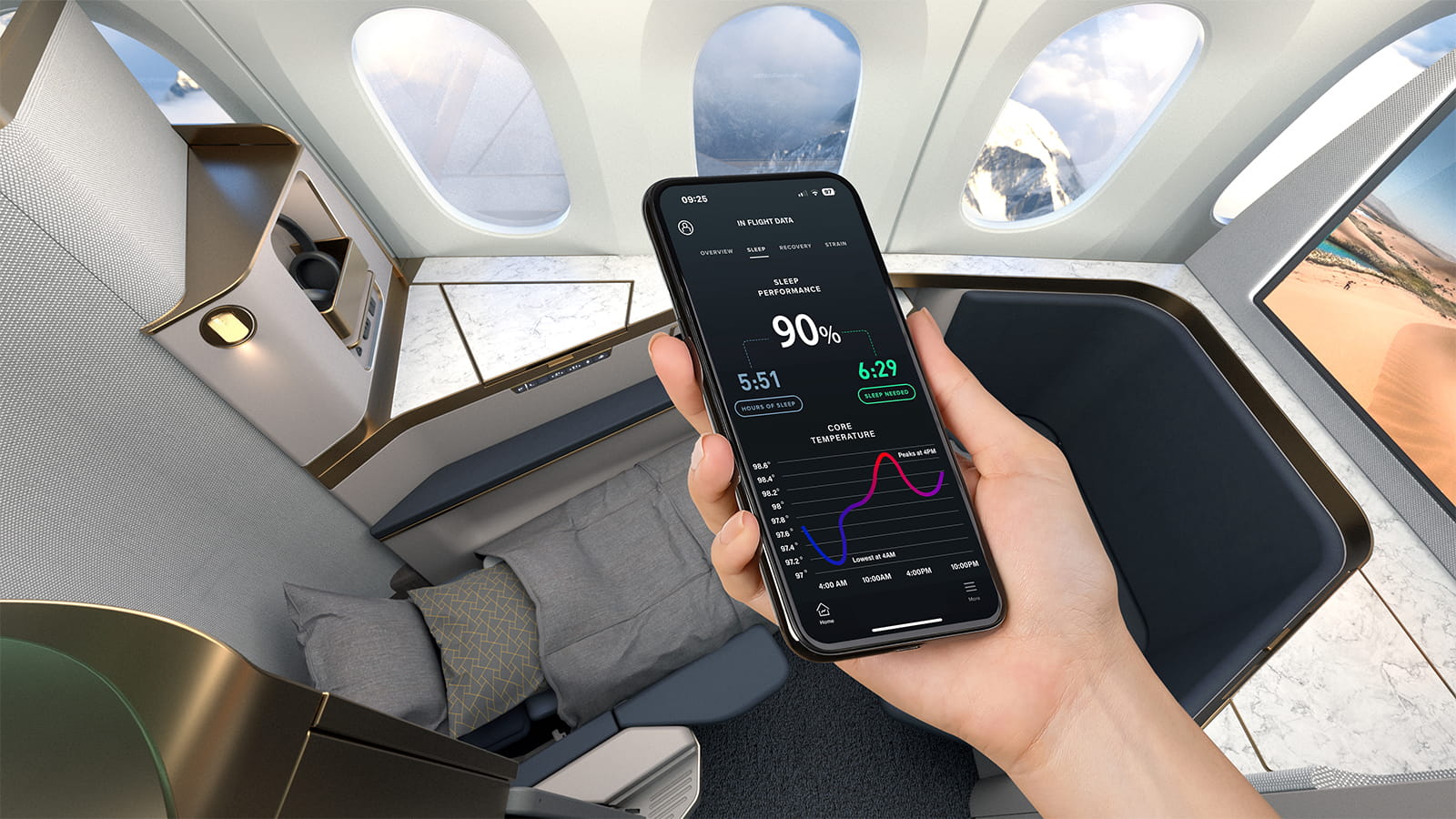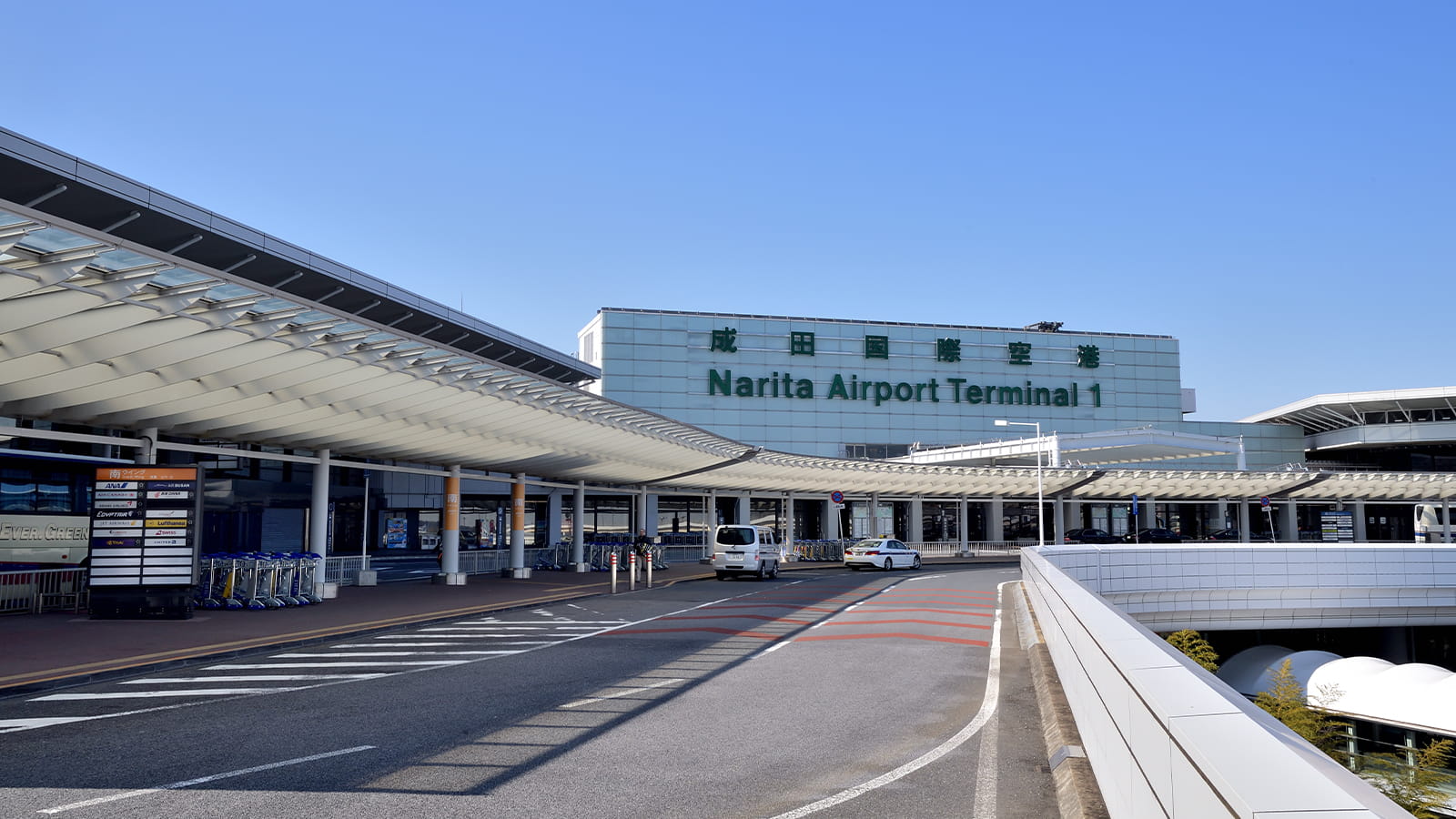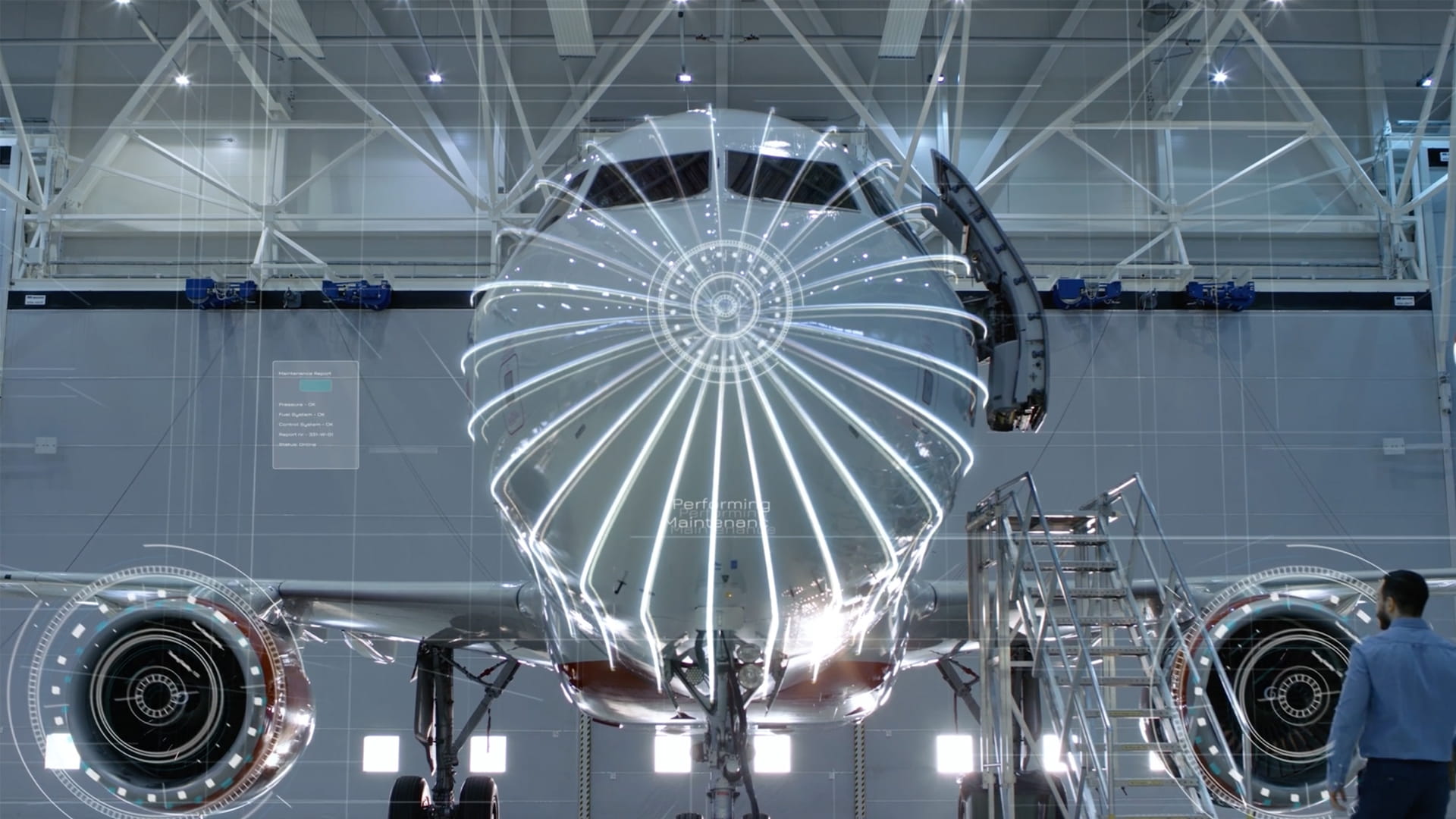How better helicopter seats help the next generation of pilots
Collins Aerospace has ergonomic rotary-wing seating to help combat pilots stay focused on what matters most: the mission
It’s 5 a.m. and Chadwick Ford’s alarm signals a brand-new day with the same old back. The retired U.S. Army chief warrant officer 5 (CW5) sits on the edge of the bed, hands and arms supporting his spine. He does his physical therapy-prescribed exercises and knocks back a couple ibuprofen, chased with a glass of water.
Then it’s off to the gym for stretching, strength training and functional movement workouts. Half an hour of ice and a shower round out the morning before heading into work.
“I’m only 42, but boy, my body sure thinks it's a lot older,” said Ford, a father of three who works for Collins Aerospace on integrated military programs for the Mission Systems team in Huntsville, Alabama. It’s a job that’s far less physically demanding than the 24 years he spent in the Army.
Twenty of those years were spent piloting Black Hawk helicopters, with seven years in overseas combat. Ford says he loved his time in the Army and wouldn’t trade a moment of it. “Being in the Army truly altered the course of my life for the better – but the long hours of flying were one of the many physical challenges that came with the job.”
Ford’s experience – both with flying and the toll it has taken on his body – make him uniquely qualified to deliver something better for the next generation of pilots. He is among many employees at Collins Aerospace, a Raytheon Technologies business, developing ergonomic rotary-wing seating that’s easier on the body and more conducive to helping pilots and troops focus on the mission at hand. Collins’ seats are available across a broad spectrum of military helicopters, including the Black Hawk and all Future Vertical Lift platforms.
Advancements in military seating
“I’ve seen the advancements we’ve made in military seats, improvements that can help with some of the physical stressors,” said Ford. “Collins has a lot of aviators, a ton of experience to leverage and contacts in the field to continue testing and refining our products. We can really make a difference for the next generation of pilots.”
Our Interiors teams are doing just that.
“Lightweight, crashworthy and comfortable - seats must deliver those three things or risk actively diverting pilot attention,” said Andreas Meissner, an engineering director at Collins’ helicopter seating division in Landshut, Germany. “The slightest lapse in pilot attention can literally be the difference between life and death. We cannot afford to risk a pilot momentarily focusing on back pain rather than the task at hand.”
Meissner has more than 20 years of experience in aerospace, most recently engineering pilot, co-pilot, troop and gunner seats for a variety of helicopter platforms. “We focus on designs that positively impact the end-user, improve occupant functionality and safety, while also being lightweight and easy to maintain.”
Safety first
Collins’ military rotorcraft seating products meet or exceed stringent structural and injury requirements:
- Dynamic and static testing ensure seats stand up against the stressors of crash events, protecting the occupant.
- Patented automatic energy absorber is calibrated to minimize spinal loads, reducing the risk of back injury.
- Restraint technologies such as seatbelt pretensioners and shoulder restraint airbag systems reduce instances of bodily and neck injury.
- Ballistic armored seating protects pilots without gaps or weak spots with a unique armored seat bucket design, side armor and hip armor.
Ergonomically speaking
Collins’ advanced pilot seats increase comfort and mission effectiveness through a number of features, including:
- Ergonomic design using pressure mapping that accounts for pilot size, eases back/neck loads and provides comfort comparable to a seat on a business jet.
- Vibration absorption calibrated to mitigate high-frequency oscillations that affect the pilot’s nervous system, comfort and fine motor skills.
- Occupant adjustment options, including height raise and lower, forward/aft modification, seat pan tilt and lumbar support.
- An integral seat bucket design shaped to ensure the occupant is comfortable, while meeting key weight and crashworthiness requirements.
- Customizable options based on specific customer requests, including arm rests, ballistic material, adjustable wing armor and more.
All this sounds good to Ford. “Having this technology around when I was a pilot would have been a game changer,” he says.
Compounding forces
The UH-60 Black Hawk is a star in the Army's helicopter fleet, but, as Ford tells it, riding in one can get uncomfortable. The reasons include:
- Helicopters don’t drive like cars. They keep their nose down during flight, meaning the cockpit tilts forward – and the pilot does, too.
- Pilots carry 50 to 75 pounds of gear. Ballistic vests, weapons, ammunition and helmets with night vision goggles all change a pilot's center of gravity.
- Current seats push the body forward. They are vertical and parallel at takeoff, with limited recline options and no fore/aft adjustment, forcing occupants even farther forward once the aircraft assumes its in-flight tilt.
- Missions can last in excess of eight hours. Pilots are hunched over for hours at a time while performing complex military tasks and dealing with life-or-death levels of stress.
All the unnatural forward and downward pressure places a strain on the back and neck that can overwhelm even the most seasoned military pilot.
Future focused
Though Ford is retired from the Army, he’s still invested in the success and well-being of his fellow helicopter pilots. He’s glad to be working for a company that is, too.
“I love what I’m doing now,” he says. “Making connections and finding opportunities across Collins to improve the value for our militaries and the performance for our warfighters – I couldn’t ask for anything better.”

